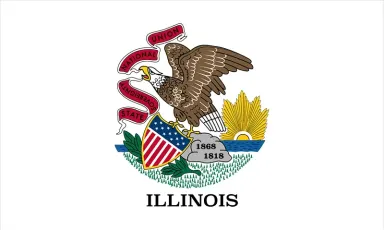Pennsylvania Trucking Laws

Pennsylvania recorded 7,244 crashes involving heavy trucks in 2021. Two-vehicle collisions accounted for 38% (2,117) of these crashes. In terms of fatalities, there were 156 deaths from heavy truck crashes in 2021, which is 27.9% higher than the 2020 figure.
Although no one can predict the future, you can prepare for an unfortunate event like a traffic accident by understanding the laws and regulations governing the operation of heavy trucks in Pennsylvania. This information will help you know your rights, obligations, and legal options if a truck accident causes you or other people injuries, the loss of a loved one, or damage to property.
The following is a guide to Pennsylvania trucking accident laws. It provides key details like truck weight and size limits, alcohol use and testing requirements for drivers, and other laws concerning the liability of parties involved in a truck accident and the damages that injured individuals can recover.
Pennsylvania Trucking Weight and Size Limits
Overweight trucks can be difficult to control, making them highly likely to cause accidents. They also tend to damage roads and bridges, increasing the cost of maintenance and repairs.
To prevent collisions and protect the structural integrity of the highway and bridge system, Pennsylvania imposes weight and size limits for commercial trucks.
Overall Vehicle Weight Limit
In the United States, commercial trucks are classified according to the vehicle’s gross vehicle weight rating (GVWR):
This classification is important because different classes of trucks have different regulations and requirements that apply to them. The classification of trucks can also impact insurance rates.
A truck's overall weight – including any cargo, passengers, and equipment – must adhere to the GVWR set by law.
Another type of weight limit besides GVWR is the gross vehicle weight limit (GVWL), which depends on the Federal Bridge Formula. GVWL is based on the number of axles, the distance between the axles, and the vehicle’s weight.
Axle Weight Limit
Pennsylvania places a limit on the load each type of axle can carry. The maximum weights for common configurations are as follows:
Steering axle: 20,000 lbs
Single axle: 20,000 lbs
Tandem axle: 42,000 lbs
Tridem axle: 53,000 lbs
Quad axle: 63,000 lbs
Axle weight limits are also subject to the distance between the axles:
If the distance between the nearest adjacent axles is less than eight feet, the maximum weight each axle can hold is 18,000 lbs.
If the distance between any two nearest adjacent axles exceeds eight feet, the maximum weight each of these axles can hold is raised to 22,400 lbs.
A truck must meet both the overall weight limit and the axle weight limit. Therefore, a Class 7 truck with a total weight of 33,000 lbs may be legal on the road. But, if it has a single axle holding more than 20,000 lbs, it will violate Pennsylvania's single-axle weight limit. A steering axle exceeding 20,000 lbs. will also be a violation.
Vehicles that exceed either the general weight or axle weight limit require special permits from the Pennsylvania Department of Transportation (PennDOT).
Pennsylvania Hours of Service Regulations
A tired, sleepy, and overworked semi-truck driver can be disastrous to motorists and infrastructure. According to the National Transportation Safety Board, sleep deprivation contributes to about 35% of crashes. The AAA Foundation for Traffic Safety notes that about 57% of drowsy crashes involve drivers drifting off their lane or off the road.
Therefore, Pennsylvania has enacted regulations concerning the hours of service for each trucker.
Commercial drivers of Class 3+ trucks are required to comply with Federal Hours of Service (HOS) regulations. These regulations are enforced by the Federal Motor Carrier Safety Administration (FMCSA) and apply to all interstate commercial drivers.
The HOS regulations include the following rules and requirements:
11-Hour Driving Limit: Truck drivers may not drive more than 11 hours after taking 10 consecutive hours off duty.
14-Hour Limit: Truck drivers may not work more than 14 hours in a day. This includes driving and non-driving time. The 14-hour work period begins after a driver has 10 consecutive non-driving hours.
Rest Breaks: Truck drivers must take a 30-minute break after 8 hours of driving.
60/70 Hour Limit: Truck drivers may not work more than 60 hours in 7 consecutive days, or 70 hours in 8 consecutive days. The workweek gets reset after a driver takes 34 or more hours off.
Sleeper Berth Provision: A driver may use the sleeper berth to accumulate the required off-duty time for rest periods. This includes the 10 consecutive non-driving hours.
Failure to comply with these HOS regulations can result in fines and penalties for both the driver and the employer.
Drivers face a civil penalty of up to $5,000 for each offense. They may also lose their commercial driver's license for violating HOS.
Employers knowingly allowing or requiring their drivers to violate HOS regulations will be fined up to $27,500 for each offense. In addition, a carrier's operating authority may be suspended or revoked.
Electronic Logging Devices
Pennsylvania requires commercial truck drivers to use electronic logging devices (ELDs) to record their service hours.
ELDs are designed to prevent drivers from falsifying their logbooks and ensure compliance with HOS regulations. Trucking companies must maintain these records for at least six months and present them for inspection upon request by law enforcement officials.
If a trucking company does not have compliant ELDs in its commercial vehicles, its fines can range from $1,000 to $10,000 per offense. Its safety rating may also be downgraded due to the violation.
Drivers could face up to $5,000 in fines per offense. The penalties can also include out-of-service orders and even disqualification from driving.
Drivers or carriers can be sued for negligence if their HOS violations result in an accident or the destruction of property. However, proving negligence can be a complex process. It will be necessary to demonstrate that the violation of HOS regulations directly contributed to the accident.
Pennsylvania Drug and Alcohol Use and Testing Law
It is illegal for commercial truck drivers in Pennsylvania to use drugs or alcohol while on duty. State law imposes this prohibition to minimize accidents and injuries caused by commercial motor vehicle drivers’ use of alcohol or controlled substances.
Pennsylvania also has testing laws. FMCSA regulations require drug and alcohol testing for all commercial drivers. Trucking companies must also do random testing on all their employees who hold a commercial driver’s license. The testing should be random and unannounced. Truckers who refuse to submit to drug or alcohol testing can face a one-year disqualification from driving a commercial vehicle.
In Pennsylvania, the legal blood alcohol content (BAC) limit for commercial truck drivers is 0.04%, in comparison to the limit of 0.08% for non-commercial drivers. A driver caught with a BAC of 0.04% or higher may face license suspension, fines, and even criminal charges.
Employers are required to report employee drug and alcohol violations to PennDOT. Employers who fail to report drug or alcohol violations to the appropriate authorities can be fined up to $2,500 for each offense. The penalty can be fourfold if employers allow a non-sober driver to operate a commercial vehicle.
Pennsylvania Safety Inspection Law
Pennsylvania requires annual safety inspections for all commercial vehicles operating in the state. State-certified inspection stations conduct the annual inspection.
There are three levels of inspection:
Level I inspections are the most comprehensive and are typically conducted at designated inspection or weigh stations. These inspections may be conducted by state law enforcement officers, FMCSA inspectors, or authorized third-party inspectors.
Level II inspections are walk-around inspections that include everything in Level I except for the items that require the inspector to get under the vehicle. Level II inspections are conducted roadside and focus on the vehicle's mechanical fitness, brake systems, tires, lights, and other components. The driver's documentation is also inspected here.
Level III inspections focus on the driver's documentation, including the driver's license, medical examiner's certificate, HOS documentation, and other required paperwork.
In addition to the annual inspections, drivers are required to perform daily inspections of their vehicles to identify any safety issues before they become a problem on the road. These daily inspections must be carried out before and after a trip.
If a truck or driver fails an inspection, they may be issued an out-of-service (OOS) order.
Out-Of-Service Orders
An OOS order is a legal order that prohibits the operation of a commercial vehicle and/or its driver. Law enforcers or safety inspectors issue OOS orders to ensure road safety, especially on public roads and highways.
Here are some of the grounds for issuing an OOS order according to the North American Standard Out-of-Service Criteria:
Driver's lack of a commercial driver’s license (CDL)
Driver's failure to comply with HOS regulations
Driver's use of drugs or alcohol while operating a commercial vehicle
Vehicle's brakes or steering system not functioning properly
Vehicle's tires or wheels showing excessive wear or damage
Vehicle's lighting or reflectors not working correctly
Inadequately secured load, which poses a safety hazard
Fuel leaks or other defects that could result in a fire
A truck that continues to operate despite the presence of the OOS conditions mentioned above is in serious violation of safety regulations. Authorities may impound the truck until the necessary repairs are made. The trucking company may also be required to pay a fine of up to $100,000 for each offense and other penalties provided by law.
If an OOS driver is caught operating a commercial vehicle, he can be fined up to $5,000 and risk having his CDL suspended or revoked. On the part of the trucking company, a sanction may also be imposed for allowing the driver to operate an OOS commercial vehicle.
Pennsylvania Law on Hazardous Material Transportation
The law regulates the transport of hazardous materials because of their risks to security, health, and the environment. The Hazardous Materials Transportation Act (HMTA) is a federal law enforced by the Pipeline and Hazardous Materials Safety Administration (PHMSA). It identifies nine classes of hazardous materials:
Explosives
Gases
Flammable and Combustible Liquids
Flammable Solids
Oxidizers and Organic Peroxides
Toxic Materials and Infectious Substances
Radioactive Materials
Corrosives
Miscellaneous Dangerous Goods (including lithium batteries, asbestos, and dry ice)
Truck drivers that haul hazardous materials must have the proper training and endorsements on their CDL. Shipping papers must identify the material, quantity, and hazards associated with the transported cargo.
The vehicle’s exterior should also display a sign warning others of the potential hazards. Thus, oil carriers, for example, use a bright red font to let everyone within a 50-meter radius know that they are carrying explosive materials.
The transported materials must also have the proper containers and warning labels.
As a disaster prevention measure, all vehicles transporting hazardous materials must have an emergency response plan in case of an accident or spill. This plan must include procedures for containing the spilled material.
For every violation of the HMTA law, the fine can be up to $80,000. Therefore, two violations going on for a week can add up to $1,120,000 in fines. Drivers and employers can also face criminal penalties and imprisonment for up to 10 years, plus additional fines associated with cleanup and environmental damage.
Pennsylvania Commercial Truck Minimum Insurance Requirements
There are several types of insurance that trucking companies can purchase:
Cargo insurance
Physical damage insurance
Workers’ compensation insurance
Liability insurance.
These are all required by Pennsylvania law. Liability insurance is especially important if injuries, deaths, or damage to property result from a truck accident. Liability insurance covers damages caused by the trucking company to third parties.
The trucking company’s liability insurance plan must meet the following minimum coverage requirements provided by law:
For-hire carriers transporting non-hazardous property
$300,000 for vehicles under 10,001 lbs GVWR
$750,000 for vehicles over 10,001 lbs GVWR
For-hire carriers transporting oil and hazardous materials
$300,000 for vehicles under 10,001 lbs GVWR
$1,000,000 for vehicles over 10,001 lbs GVWR
Private carriers transporting non-hazardous property
$300,000 for vehicles under 10,001 lbs GVWR
$500,000 for vehicles over 10,001 lbs GVWR
Private carriers transporting oil and hazardous materials
$300,000 for vehicles under 10,001 lbs GVWR
$1,000,000 for vehicles over 10,001 lbs GVWR
These rates apply per vehicle. Thus, if a for-hire trucking company owns and operates nine Class 5 trucks that carry hazardous materials, that company’s required liability coverage is $9,000,000.
If a trucking company does not meet the required insurance coverage in Pennsylvania, it may face civil fines of up to $1,000 for each day that it operates without the required insurance coverage.
PennDOT can also suspend or revoke a trucking company's operating authority for not meeting the minimum coverage. In some cases, the violation may result in criminal charges, which can carry additional fines and even imprisonment.
Truck Driver Insurance
A driver who owns and operates a truck as an independent contractor is required to have his own liability insurance. Independent contractors will face the same fines and penalties that a trucking company would if they don’t meet the minimum insurance coverage.
If a driver is employed by the trucking company, he is not required by Pennsylvania law to have his own insurance. However, he may be required by his employer to have bobtail insurance. This insurance covers the driver and the truck when it is being used for non-business purposes (e.g., when the driver uses the truck to go fishing). The driver typically shoulders Bobtail insurance costs, which are deducted from his paycheck.
How Much Can Someone Sue for a Truck Accident in Pennsylvania?
There is no limit to how much someone can sue for a truck accident in Pennsylvania. The damages that can be sought in a truck accident lawsuit in Pennsylvania include the following:
Medical expenses: These include all costs associated with medical treatment, such as hospital bills, doctor's visits, rehabilitation, and medication.
Lost wages: If the accident caused the victim to miss work, the victim may be entitled to compensation for lost wages.
Property damage: If the victim's vehicle or other property was damaged in the accident, he or she may be entitled to compensation for the cost of repairs or replacement.
Pain and suffering: These refer to the physical and emotional pain caused by an accident.
Loss of consortium: If the victim is married, his or her spouse may be entitled to compensation for the loss of companionship and intimacy caused by the accident.
It is important to note that Pennsylvania follows a Modified Comparative Fault System, which can affect the damage compensation a plaintiff will receive.
Pennsylvania Statute of Limitations for Truck Accidents
The statute of limitations for truck accidents in Pennsylvania is two years. This means an injured party must file a lawsuit within two years of the accident or lose the right to pursue compensation.
The two-year window also applies to property damage.
However, there are some exceptions to this two-year rule.
If the government owns the truck involved in the accident, the plaintiff may be required to file a notice of claim before pursuing a lawsuit.
If the victim is a minor, the limit is extended until the victim’s 20th birthday. Therefore, a 16-year-old victim has a four-year window to file a lawsuit.
Pursue compensatory damages immediately after an accident involving trucks to avoid losing your right to damage compensation. This will ensure you meet all applicable deadlines.
Pennsylvania Is a Choice No-Fault State for Insurance Claims
Pennsylvania is a "choice no-fault" state. This means that drivers have the option to choose between a no-fault or fault-based insurance system.
No-Fault System
Under the no-fault system, each driver's insurance company pays for the damages in an accident. This is regardless of who was at fault for the accident. Because the insurance company pays for the damages, there is no need for the injured party to sue the other driver. This can save time and money and reduce legal headaches.
Fault System
Under the fault-based system, drivers may seek compensation from the at-fault driver's insurance company. The at-fault’s insurance company will then investigate the claim and determine the compensation that should be paid to the non-fault driver.
The at-fault driver’s insurance company may argue that the non-fault driver was partially responsible for the accident. If this happens, the case may go to court, and that is where the Modified Comparative Fault system applies.
Pennsylvania Is a Modified Comparative Fault State for Trucking Accident Lawsuits
Pennsylvania operates under a Modified Comparative Fault system.
This means that the amount of damage compensation a victim can recover will be reduced by the percentage of their fault in the accident. For example, if the plaintiff is found to be 20% at fault for an accident and awarded $100,000 in damages, his or her award will be reduced by 20% to $80,000.
The percentage of fault is determined by a jury or judge based on the evidence presented in the case. However, if the plaintiff is found to be more than 50% at fault, he or she will not be able to recover any damages.
Average Settlement for Pennsylvania Trucking Accident Lawsuits
Settlement amounts in truck accident lawsuits depend on the circumstances surrounding each case. The severity of the plaintiff’s injuries, the cost of property damage, and the apportionment of fault are also among the factors that determine the recoverable damages.
In Eicher v. Tillery Trucking, Inc. – a case heard in the U.S. District Court for the Western District of Pennsylvania in 2018 – the plaintiff received $12.36 million in total damages. The award included compensatory damages of $10 million for pain and suffering and $2.25 million for medical expenses. Punitive damages were valued at $125,000.
Legal Resources for Pennsylvania Trucking Accident Victims
The Pennsylvania Vehicle Code
The Pennsylvania Vehicle Code is a collection of laws and regulations that govern vehicle use in the state. You can find the PA Vehicle Code in Title 75 of the Pennsylvania Code, accessed through the Pennsylvania General Assembly's website or the Pennsylvania Code and Bulletin website.
Pennsylvania Legal Aid Network
The Pennsylvania Legal Aid Network (PLAN) is a statewide organization that provides legal assistance to low-income individuals and families throughout the state. PLAN comprises a network of legal aid programs that ensures everyone has access to legal representation, regardless of their financial situation.
Although PLAN does not specialize in trucking or vehicular accidents, it is an excellent source of free legal service that could help when times are hard, especially after an accident.
Pennsylvania Bar Association
The Pennsylvania Bar Association (PBA) is a voluntary bar association that provides a range of services to the public. These include law resources for consumers, pro-bono aid, and a lawyer referral service. The lawyer referral service helps connect the public with qualified attorneys in their area. The initial 30-minute consultation will not cost more than $30.
Expertise.com StaffAuthor
Step into the world of Expertise.com, your go-to hub for credible insights. We don't take accuracy lightly around here. Our squad of expert reviewers, each a maestro in their field, has given the green light to every single article you'll find. From rigorous fact-checking to meticulous evaluations of service providers, we've got it all covered. So feel free to dive in and explore. The information you'll uncover has been stamped with the seal of approval by our top-notch experts.




